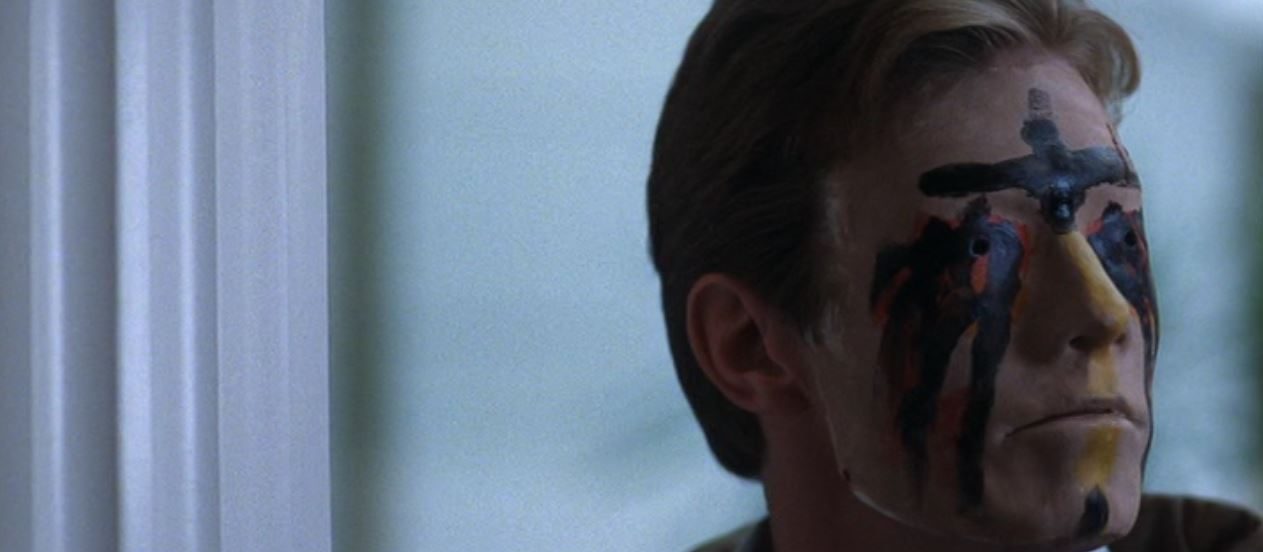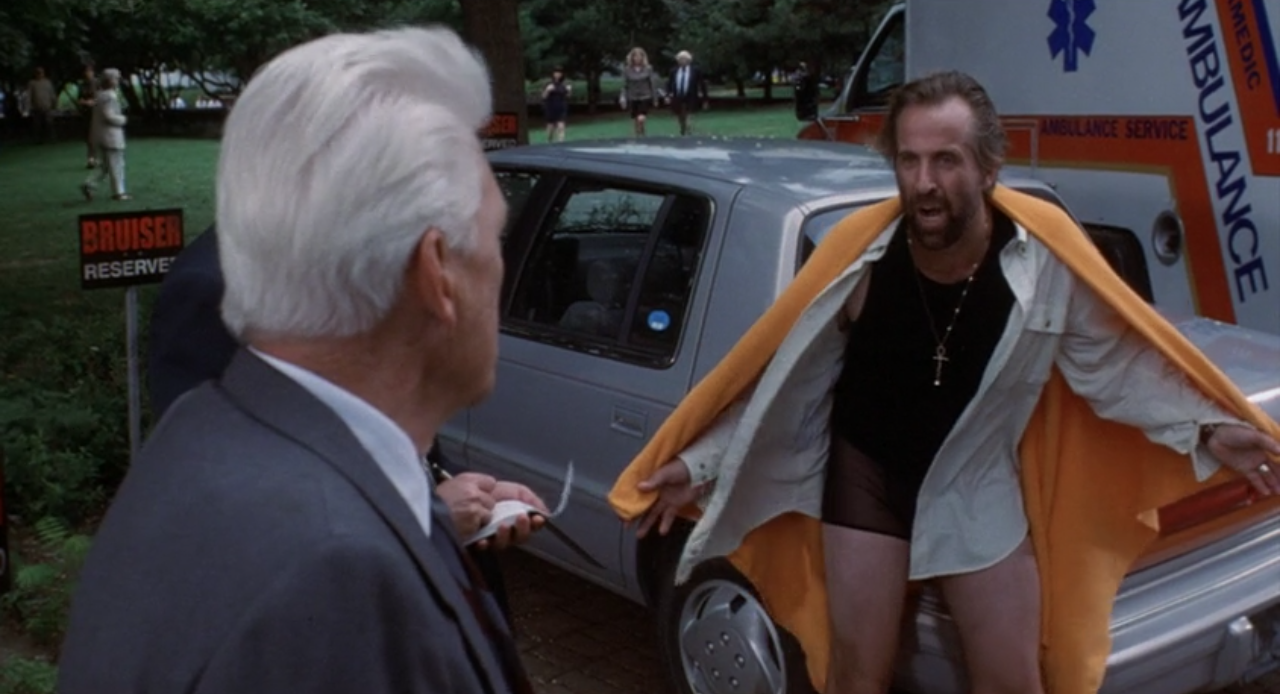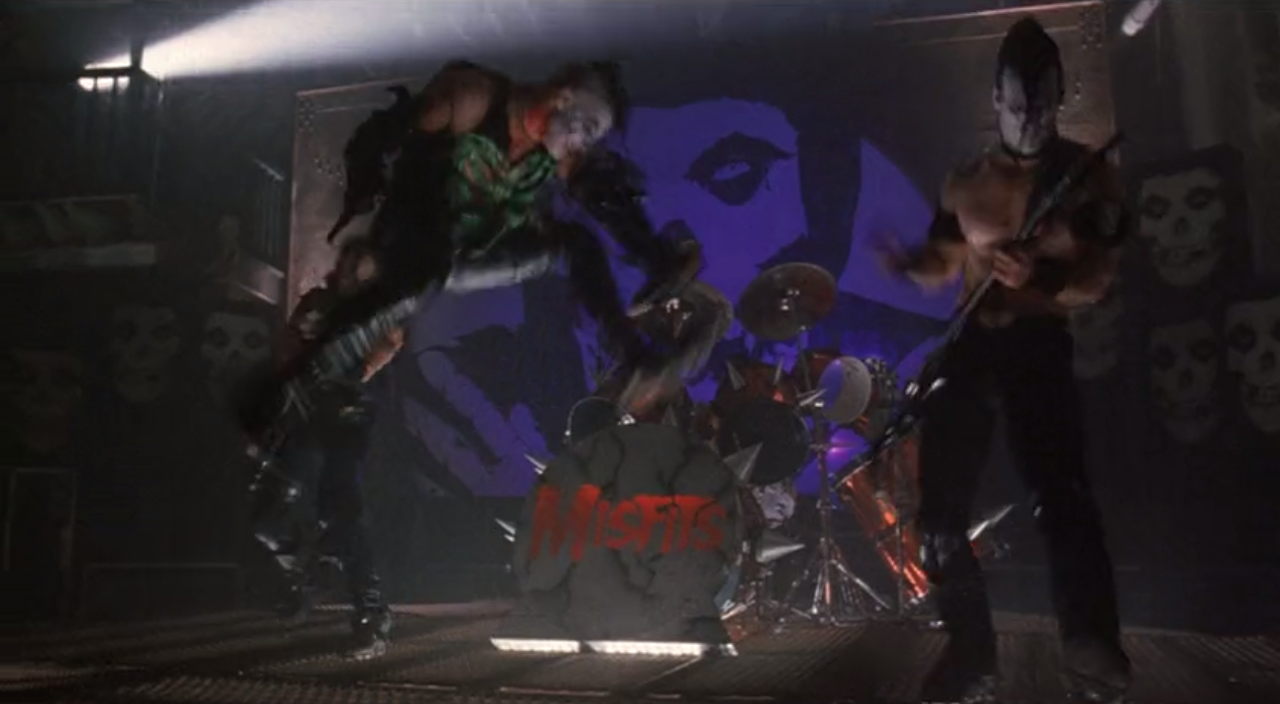

“I’m sorry, I didn’t mean to startle you. That’s a lie. Actually I did.”
Bruiser may prove that George Romero could do more than just blood and guts, but it also proves that he was better when staying in that familiar lane. Light on gore, heavy on satire and existential character study, it tells the farcical story of a hapless businessman who is routinely taken advantage of by his wife, his colleagues, his boss, even his housemaid. One morning, he wakes up to find his face has morphed into a white mask with pinholes for eyes, rendering him unrecognizable and giving him the opportunity to anonymously enact some of the overdue revenge he’s been dreaming about. It’s more of a slightly humorous black comedy than the slasher flick one would expect and it fails to leave a strong impression. Besides the iconic look of the main character, a strong performance from Jason Flemyng and a memorable one from Peter Stormare, it’s a sleazy, vulgar product that begins fading from memory before it’s concluded.
Jason Flemying is Henry, an aspiring magazine executive who lacks a spine. He lets everyone walk right over him, ignore him, and exploit him. He’s a receptacle for whatever abuse they wish to dish out. His best friend (Andrew Tarbet) has stolen money from his brokerage account and his maid has been amassing a small fortune for herself while cleaning his house. He’s so ineffectual, in fact, that when he spies his wife Janine (Nina Garbiras) pleasuring his boss Milo (Stormare) at an office party, he doesn’t even confront them.
Earlier that evening, he’d experienced an epiphany when Milo’s wife Rosie (Leslie Hope) made a plaster mask for him and added it to her “garden of lost souls” in the backyard. She asked him to decorate it in a way that would convey his personality and he realized that he couldn’t think of anything that defined him as a person. After binge drinking that evening and fantasizing about planting an axe in Janine’s forehead, he wakes up the next morning with a blank white visage.

Previously only capable of brutal, heinous acts via fantasy, Henry’s new identity gives him carte blanche to begin slaying with abandon. First is Katie (Beatriz Pizano), the kleptomaniac maid, who ends up wrapped in a plastic tarp. Next is Janine, who he hangs via extension cord from Milo’s office, an episode which kicks off the most humorous arc of the story. Henry has tailed her to the office and is just about to confront the adulterers when Rosie appears and snaps a photograph. In a panic, Milo chases her down from the fourth floor and out into the street. Meanwhile, Henry tosses his wife out of the window. When the police force arrives—led by Detective McCleary (Tom Atkins)—Milo, pantless, must try to explain the situation to them.
Det. McCleary: I’m embarrassed to ask this sir, but do you recognize either one of those garments?
Milo: Oh, what do you think, Columbo? I’m standing here in my underwear in the middle of the street with one of your chadrool’s waving an empty pair of pants out my window.
Henry begins painting his mask with the blood of his victims and Jimmy (Tarbet) is next on the list, showing no remorse for his theft of Henry’s investments and catching a bullet to the chest. The finale, in which Milo is killed by a laser while suspended by a cable above a Misfits concert (sans Danzig) at a Halloween party, feels a bit mismatched with the preceding portion of the film but functions as an overt nod to the crowd that stuck by Romero when he was out of favor.

Unfortunately, the concoction of quirks and motifs never congeals into a satisfying experience. But there are several worthwhile elements. Stormare’s flamboyant performance quickly becomes so absurd it’s comedic. He chews scenery like a madman and has some incredibly funny dialogue (e.g. he repeatedly conveys his desire for sex by saying he wants to “salami it up”). The metaphor of the blank mask/lack of identity, while rendered functionless by its heavy-handed implementation, provides an adequate reason for our slasher to be given a distinct look. And even though he spends the bulk of the runtime with his face behind the mask, Flemyng manages to imbue Henry with enough distinction that we are persuaded to condone his killing spree. The soundtrack’s shift from relaxed jazz (hilariously utilized as a street musician plays a sax while Janine is flung out of the office window) to punk rock in the finale is a nice touch as well. But there are also bland forays into noir, unsatisfying tonal change-ups as Romero tries to juggle slasher conventions with a more contemplative moral, and a colorful but tensionless finale.
Coming eight years after The Dark Half flopped, it’s possible to read Bruiser as a defiant metaphor; to see Flemyng’s faceless protagonist as the director himself, lashing out at those who condemned his independent spirit and tried to smooth over his personality with studio polish. His hiatus, his return to the indie market, and his venomous tone can all be traced back to his brief foray into studio-backed productions that left a bad taste in his mouth and caused a professional spiral. Unfortunately, the industry had such little regard for Romero at this point that Bruiser didn’t even get theatrically released—a real shame.
More akin to something like Man Bites Dog than anything else Romero directed, Bruiser doesn’t really work as a horror film. Rather, it must be approached as an existentialist black comedy with touches of social satire. It gets a bit confused as to what exactly it’s supposed to be, never committing fully to any single genre or tone; but neither does it coalesce into a satisfying combination of its disparate elements. A lesser work in Romero’s canon but certainly not a complete failure.